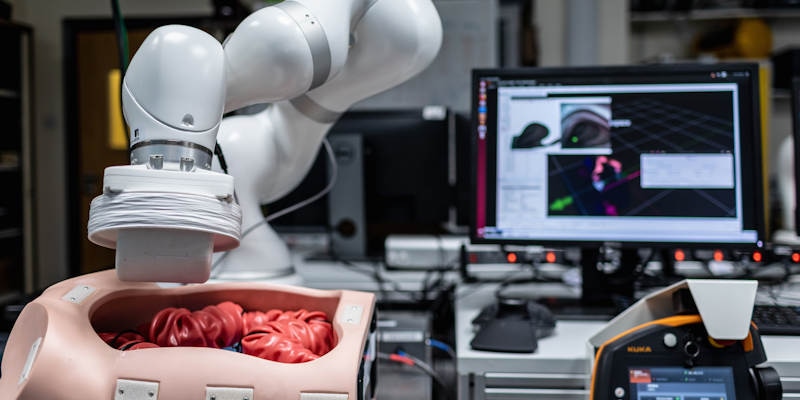Jun 20 2019
Engineers have recently demonstrated that technically, a small robotic capsule could be guided into the colon to capture micro-ultrasound images.
 (Image credit: University of Leeds)
(Image credit: University of Leeds)
This novel device is called Sonopill, and one day, it could substitute the necessity for patients to go through an endoscopic examination, which involves passing a semi-rigid scope into the bowel. However, this invasive procedure can be quite painful for patients.
In addition, a major benefit of micro-ultrasound images is that certain types of cell change related to cancer can be more easily identified.
The Sonopill is the result of 10 years of research conducted by an international team of scientists and engineers. The findings of the team’s feasibility study have been recently reported in the journal Science Robotics.
A method known as intelligent magnetic manipulation has been developed by the team. On the basis of the principle that magnets have the ability to repel and attract each other, a sequence of magnets on a robotic arm passing over the patient interacts with a magnet placed within the capsule, smoothly maneuvering it via the colon.
The magnetic forces that are utilized here do not cause any harm and can easily travel via the human tissue, thus eliminating the necessity for a physical connection between the capsule and the robotic arm.
Additionally, an artificial intelligence (AI) system make sure that the smooth capsule is properly positioned against the wall of the gut so that it can achieve the most optimized quality micro-ultrasound images. Furthermore, the feasibility study demonstrated that in case the capsule gets dislodged, the AI system can bring it back to the preferred site.
The technology has the potential to change the way doctors conduct examinations of the gastrointestinal tract. Previous studies showed that micro-ultrasound was able to capture high-resolution images and visualise small lesions in the superficial layers of the gut, providing valuable information about the early signs of disease. With this study, we show that intelligent magnetic manipulation is an effective technique to guide a micro-ultrasound capsule to perform targeted imaging deep inside the human body.
Pietro Valdastri, Professor, Study Senior Author, and Chair, Robotics and Autonomous Systems, School of Electronic and Electrical Engineering, University of Leeds
“The platform is able to localise the position of the Sonopill at any time and adjust the external driving magnet to perform a diagnostic scan while maintaining a high quality ultrasound signal. This discovery has the potential to enable painless diagnosis via a micro-ultrasound pill in the entire gastrointestinal tract,” Valdastri added.
We’re really excited by the results of this feasibility study. With an increasing demand for endoscopies, it is more important than ever to be able to deliver a precise, targeted, and cost-effective treatment that is comfortable for patients. Today, we are one step closer to delivering that. We hope that in the near future, the Sonopill will be available to all patients as part of regular medical check-ups, effectively catching serious diseases at an early stage and monitoring the health of everyone’s digestive system.
Sandy Cochran, Lead Researcher and Professor, Ultrasound Materials and Systems, University of Glasgow
The Sonopill is a tiny capsule, measuring just 21 mm in diameter and 39 mm in length, which according to the engineers can be reduced. The small capsule includes a magnet, camera¸ micro ultrasound transducer, and an LED light.
An extremely small flexible cable is attached to the capsule and this also travels into the body through the rectum and then eventually transmits the ultrasound images back to a computer located in the examination room.
The feasibility tests were carried out in animal studies that involved pigs an also on laboratory models.
Globally, gastrointestinal diseases are responsible for causing about 8 million deaths every year, including certain bowel cancers, which are associated with high mortality.
The Engineering and Physical Sciences Research Council, the US National Institutes of Health, and the Royal Society funded the study.